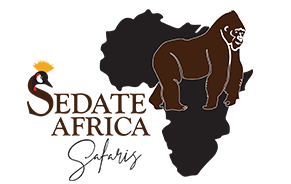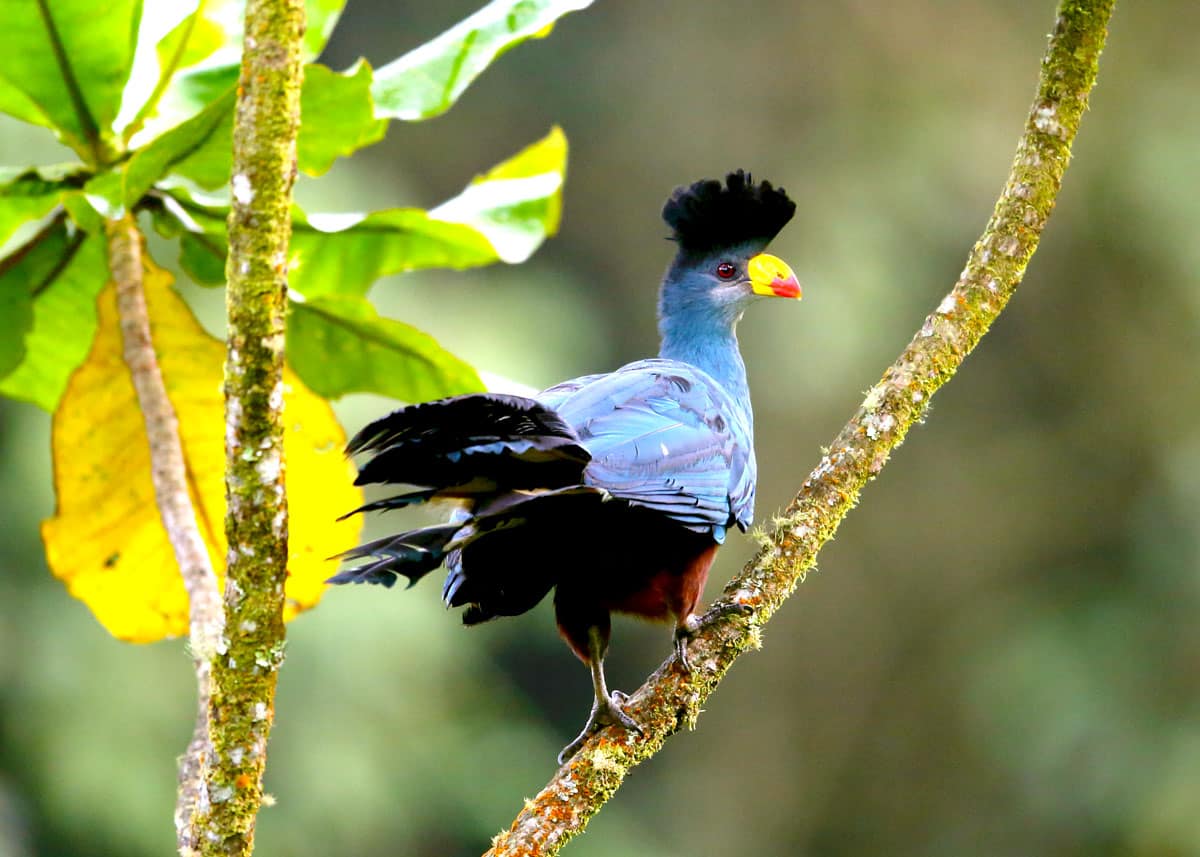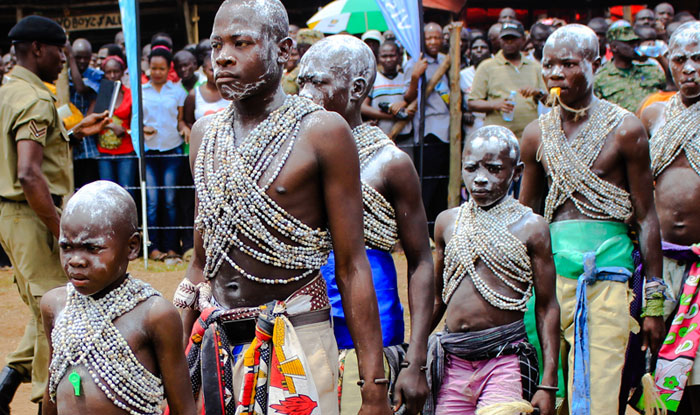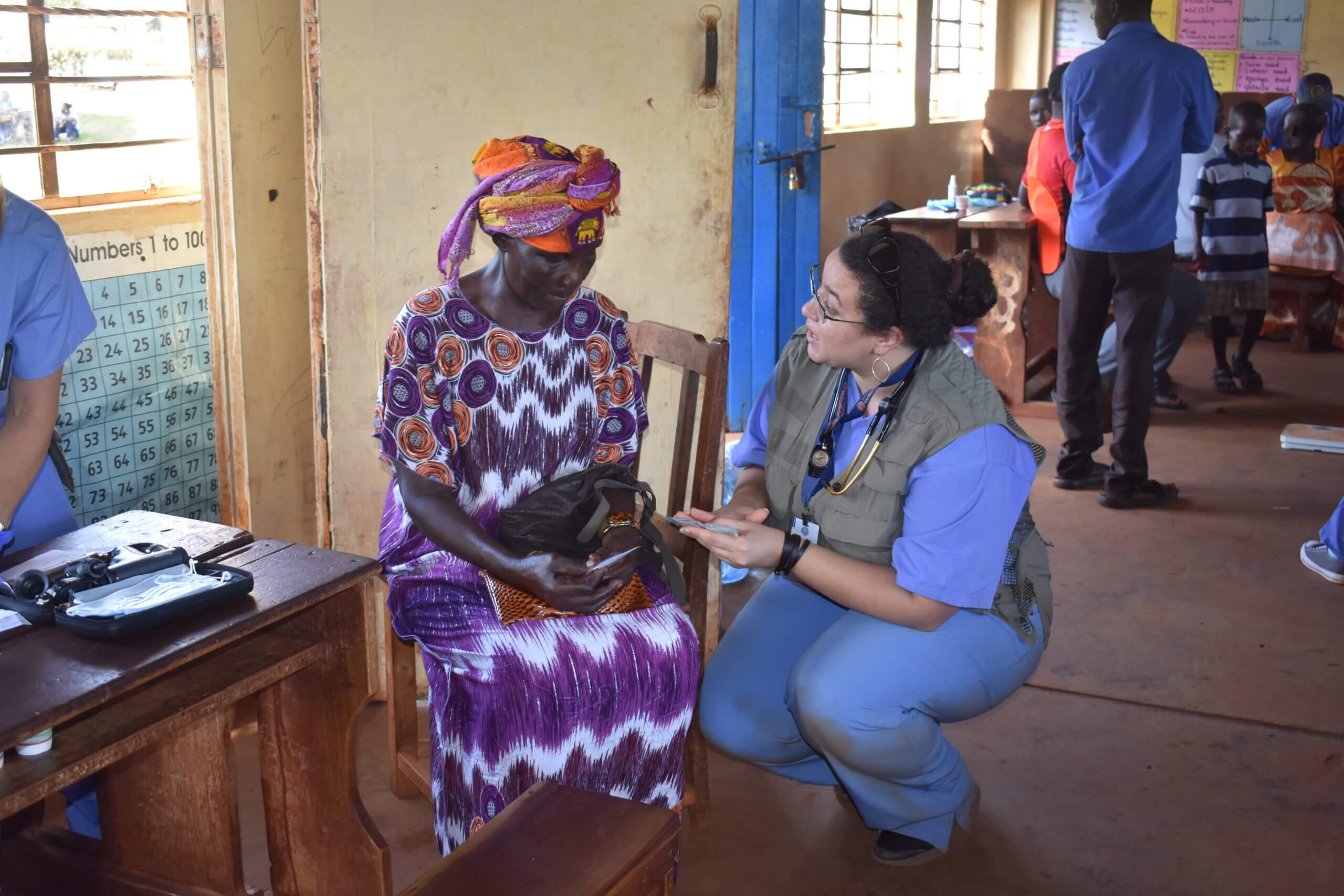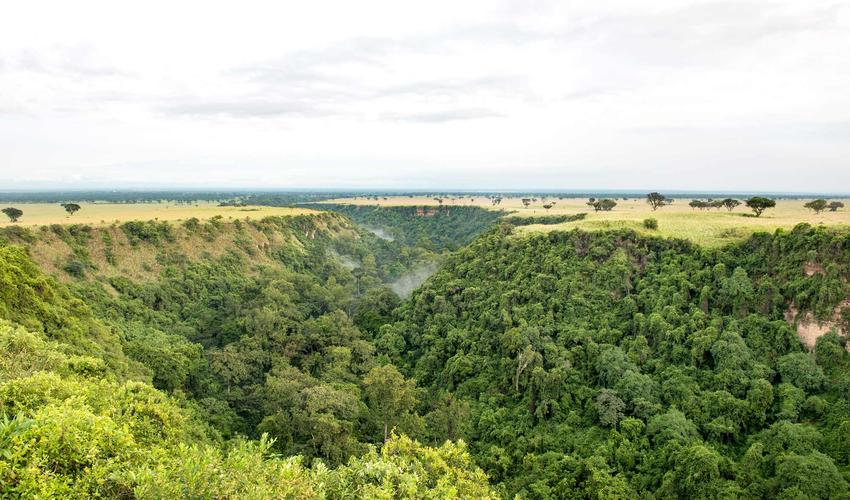Most Sought For Birds – The Great Blue Turaco
The great blue Turaco is surely one of the most sought for birds on a birding tour in Uganda?!
What does the great blue turaco look like?
The great blue turaco is a relatively big flying bird. It is seen from a distance for its brilliant colors. The mature bird certainly possesses turquoise – blue upperparts say; on the wings and tail.
Its tail is indeed long and wide with a broad, black sub-terminal band. The outer rectrices are partially shaded in yellow. Most turacos have also crimson primaries along the wings save the great blue turaco.
The neck, upper breast, and underparts are also turquoise-blue. Yet the lower breast, belly, tibial and undertail-covets are undeniably chestnut. Also to note – the head is turquoise-blue with a prominent. And blue-black crest swirls along the forecrown.
The outer eye-ring, chin, throat, and cheeks are greyish. The bird’s convex bill is covered with brilliant yellow with a red tip. The eyes are reddish-brown – engulfed with bare dark turquoise – blue eye-ring. Finally, the legs are colored black.
A note on the weight and Height of the great blue turaco – the adult bird stands at 70-75 cm in length and weighs a maximum of 855-950g for the male. The female weighs 820-1230 g.
Way of life of the great blue
This bird’s prime diet is fruits from a good vary of trees. Food supplements include; flowers, shoots, buds, insects, and leaves.
They are chiefly reported to foliage in small flocks. Feeding starts at dawn through the day and till dusk. Chicks feed especially on reticulated leaves. In the evening, pairs return to their nests and likely do the chicks and bachelor birds.
The great blue turaco is surprisingly agile. This trait is seen when climbing tree branches. Overall, their courtship commences with the onset of the rainy season.
This is accompanied by several calls and chasing along the tree branches. The bird maintains territory for a full year. The bird lives in social groups of up to 6-20 birds.
Conservation Status of the great blue
The most widespread of turaco birds in the world. The great blue turaco is endemic to Uganda, Rwanda, Burundi, central and parts of the West African coast.
It is adapted and occasionally can be seen running around tall trees in major city centers or captivity zoos in Europe and other parts of the world. From reports and updates of the IUCN records of globally endangered species; the great blue turaco stands at Least Concern.
Classification of the great blue
Kingdom: Animalia
Phylum: Chordata
Class: Aves
Order: Musophagiformes
Family: Musophagidae
Genus: Corythaeola
Species: C.cristata
Scientific name of the great blue
corythagidae cristata
Communicative notes/ calls of the great blue
The great blue turaco makes loud rounds of deep, resonant, guttural ‘Kok-Kok-Kok’. A short and sort trill may follow after the next series of; prru…prru. The calls are made at dawn and dusk.
Habitation of the great blue
The great blue prefers forest canopy and or gallery forests, trees undergoing secondary growth may as well be inhabited. The area of range is usually 2700m above sea level.
Range of this turaco
The great blue turaco ranges most in equatorial Africa (most countries crossed by the equator).
